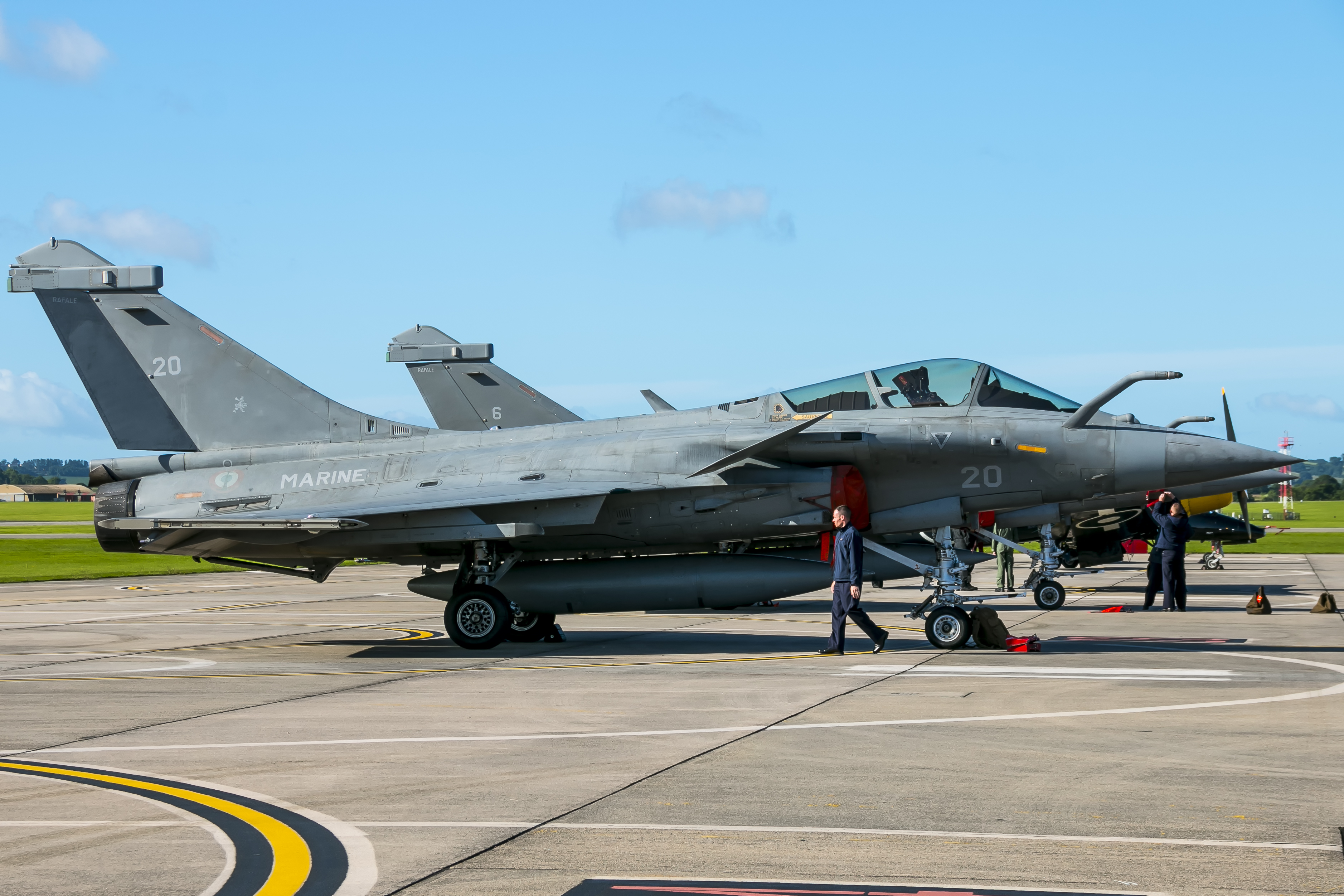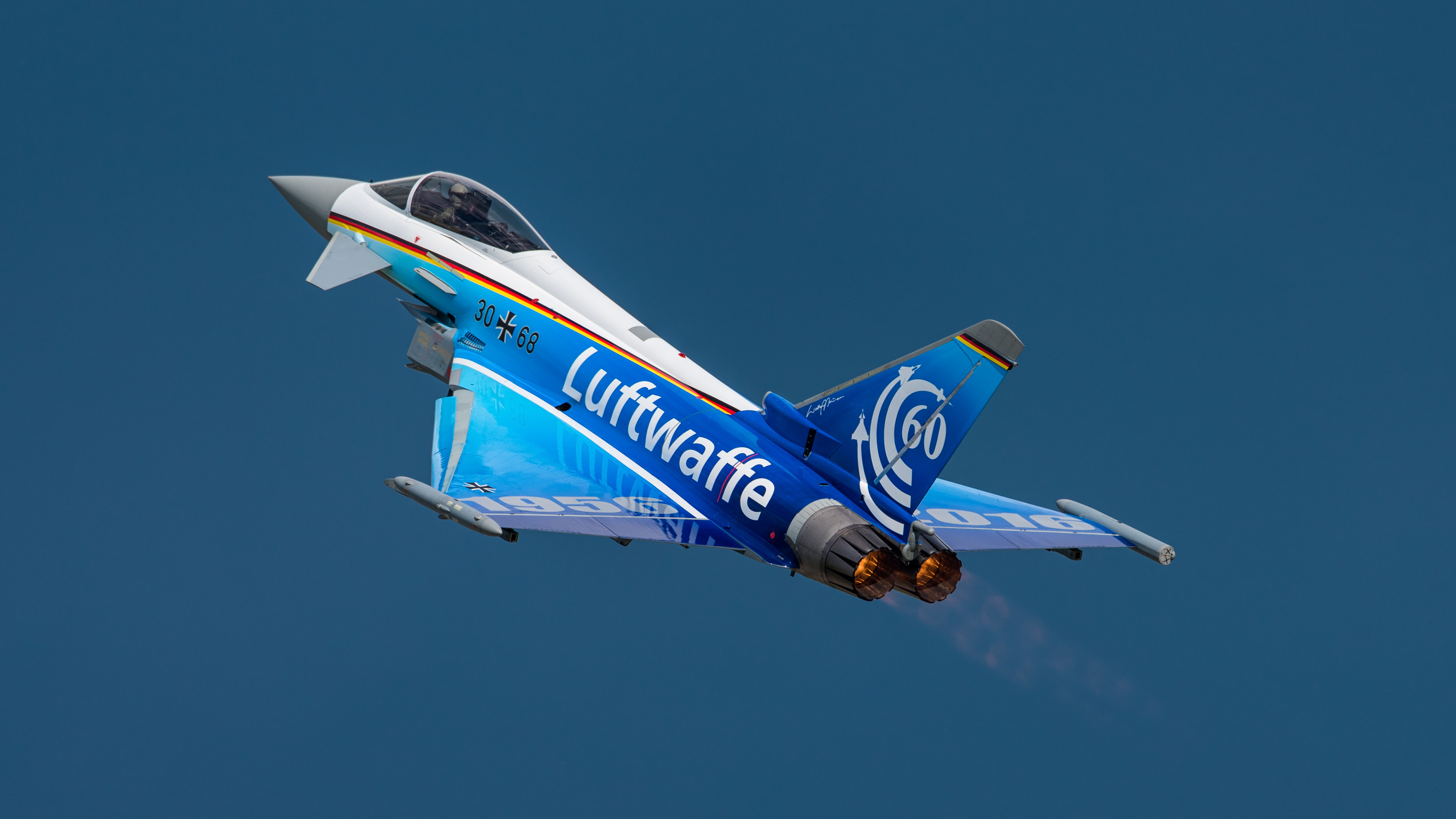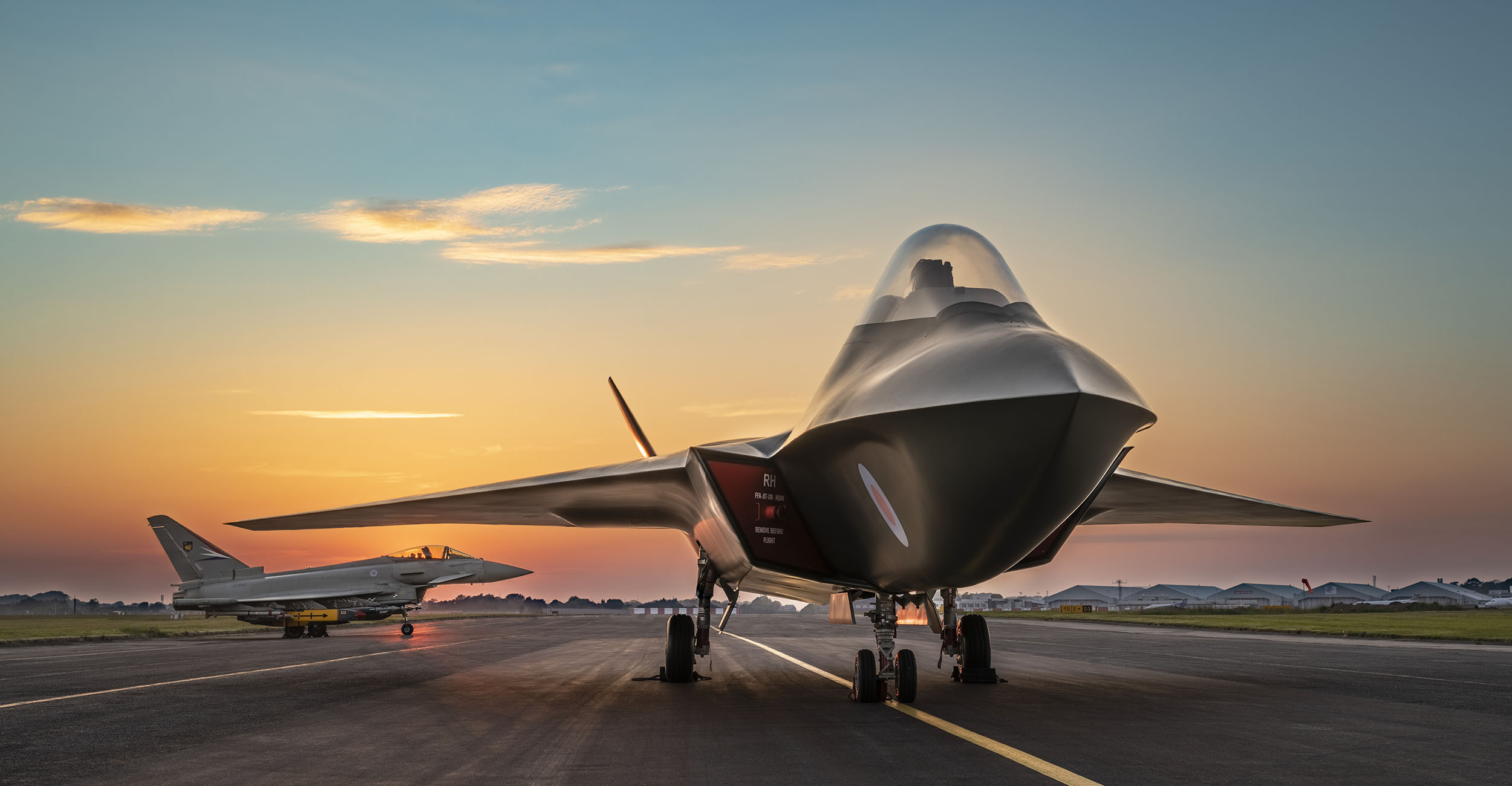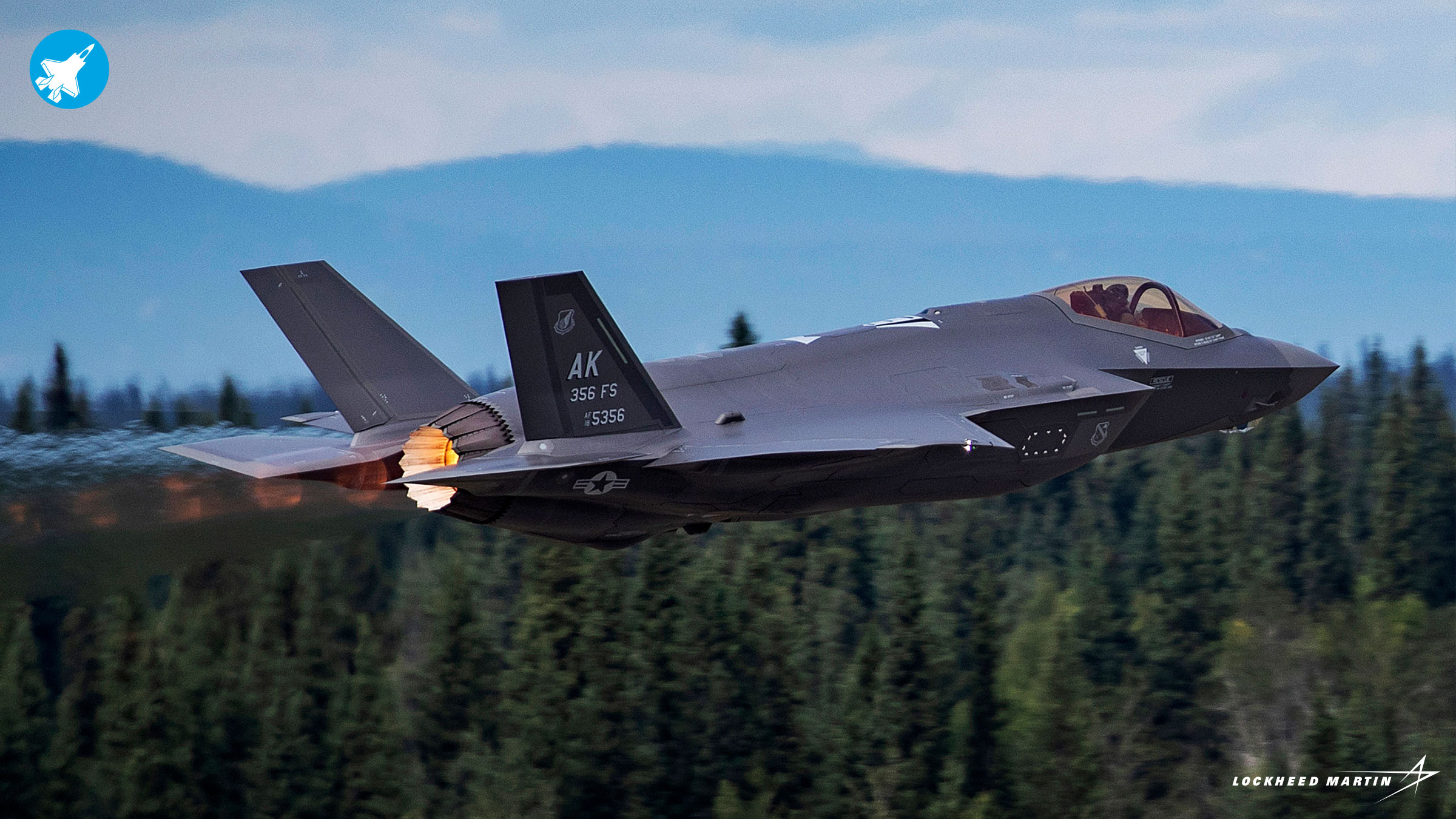While sharing the same basic rationale of regaining European autonomy in a strategic technology cluster, two European consortia – FCAS and Tempest – seem to differ in their approaches and ambition levels. At the moment, the latter is said to be having better prospects, experts say.
US, Indian Army Train For Mountain Warfare, Cold-Weather Survival Amid Chinese Hostilities Along The LAC
Bangladesh Looks To Buy Eurofighter Typhoons, Sideline Rafale Fighter Jets Due To India Factor – Expert
Germany, France, and Spain constitute the Future Combat Air System (FCAS) project. In late 2017, France and Germany disclosed their intention to jointly develop and build a future fighter aircraft to replace the Rafale and Eurofighter, respectively, as part of a wider FCAS, known also as the New Generation Aircraft (NGF).
In February 2020, they signed a €150-million investment agreement to fund early prototyping and scoping work on the system. Spain officially joined the program in December 2020, as the prime contractor for low-observability within the consortium.
The first flight of the future fighter prototype is expected in 2030. Entry into service is planned for between 2040 and 2045.
On the other hand, Tempest is being attempted by Britain, Italy, and Sweden. The idea was first mooted by Britain in 2018, with the support of its industrial majors such as BAE Systems, Leonardo UK, MBDA, and Rolls-Royce.
Italy and Sweden agreed to join the UK in this endeavor the same year. The fighter’s entry into the services is slated to be in the early 2030s.
Rafales, Typhoons On Their Way Out
Both the planned fighters are expected to replace combat aircraft currently in use by four military services in three European nations – French Rafale multirole fighters, including their carrier-capable ‘M’ version; German Eurofighter Typhoons — focused on air-to-air missions; and Spanish Typhoons, which also fulfill a ground attack role.
France wants the aircraft to be capable of delivering nuclear weapons with a distinct set of data links to guarantee a secure command and control architecture.
The aircraft in both the programs are also expected to fulfill virtually the entire spectrum of modern combat air missions over land as well as sea.

Secondly, the planned programs are not limited to advanced fighter jets alone. Given the rapid strides the unmanned combat aerial vehicles (UCAVs) or drones have taken in warfare in recent years, they are being developed as “a System of Systems” (SoS) that includes the use of drones as well as a variety of artificial intelligence and autonomous systems.
It may be noted that the 6th generation fighters envision a high degree of decentralization and automation of tactical functions, implying a further shift from human-controlled, platform-centric concepts to intelligent “systems of systems”. Some even advocate that manning them should be optional.

At the moment, European fighters include the Eurofighter Typhoon, Rafale, and Swedish Gripen. They all are labeled “generation 4.5” and comparable to 5th-generation US aircraft – F-22 Raptor and the F-35 Lightning II – in electronic and handling characteristics; but they are said to be lacking effective stealth features.
France-Germany Tension Over FCAS?
However, there are now some reports that tensions exist between France and Germany on some basic issues like intellectual property rights, industrial work share, operational priorities, and the relationship of the FCAS project to other joint endeavors such as an upgrade program for the Tiger helicopter gunship.
World’s Two Heavy-Duty Fighter Jets – Su-30MKI & F-15 Eagle – Prepare For ‘Aerial Faceoff’ Later This Year?
France, represented by Dassault, is seen as particularly sensitive about access to its nuclear-capable supply chain. Germany, whose interests are represented in the project by Airbus, wants an equitable industrial share.
But then the fact remains that, unlike Germany, France is a nuclear power and has its own nuclear deterrent. Besides, France, while remaining in the US-led NATO, has its own strategic autonomy and wants to play a much bigger international role by projecting its power.
Germany, on the other hand, is usually considered a “defensive power” that prefers to work in consort with other powers in the European Union and NATO. It does not share, therefore, the sensitivities that France is very particular about: “the nuclear delivery mission; long-range power-projection (strike) capabilities; and carrier-capable combat air to operate from the successor to the Charles de Gaulle”.

Germany is specifically opposed to any nuclear dimension. For Germany, it is enough if a combat aircraft is good enough to undertake the defensive counter-air mission against potential threats to German and NATO allies in Europe.
A Formidable Rival Of F-35 Stealth Fighter Jets, Saab Gripen’s ‘One Big Drawback’ Impeding Its Sales
The second major source of potential problems is industrial work share arrangements. The French government maintains national control over strategic industrial capabilities. The system, Amos Dossi and Niklas Masuhr of the Center for Security Studies (CSS) at ETH Zürich point out, has bred an institutionally ingrained tradition of state-industry interaction, active steering, and direct ownership.
By contrast, in German – and, equally, Spanish – politics and administration, the willingness and ability to constructively influence the domestic defense industry appear much less developed.
The relationship between the French state and its military aerospace sector, especially Dassault, is a close one. France routinely puts significant diplomatic clout behind Dassault export campaigns and views the maintenance of a capable sovereign combat air industrial base as an important long-term policy objective.
For Germany too, the maintenance of a strong industrial base and skilled jobs is a key political consideration. However, export controls are likely to prove a major sticking point, given Germany’s political reluctance to sell military equipment to governments with poor human rights and non-proliferation records.
Given this background, there are Franco-German tensions on how the partners can agree on the export prospects of the new fighter jet. France is a votary of pragmatic export rules” and will never like the German vetoes on sales. And this is all the more so as France, all told, is the lead partner in the project because of its superior experience.
With companies such as Dassault (systems integration in aerospace) and Safran (jet engines), France has maintained a national industrial base capable of autonomously developing and manufacturing systems across a broad spectrum of military applications.
Germany (Spain, too), by contrast, has long shifted most of its ambitions for autonomy from the national to the European level.
Smooth Sailing For Tempest
In contrast, there is relatively a high degree of compatibility in the Tempest program. Britain, Italy, and Sweden appear to be looking for weapon systems of similar operational properties.
Their approaches towards defense-industrial cooperation are also similar in their basic pragmatism. The manufacturing capabilities they can contribute to joint development and production efforts display a notable degree of potential complementarity.
Dossi and Masuhr argue that the setup of the Tempest consortium displays a number of potential advantages in politico-industrial terms. Overall, security-related cooperation among these countries appears largely unencumbered by political symbolism and lock-in effects.
Britain, Italy, and Sweden are similar in their “selective” notions of defense-industrial autonomy as well as in their sober, synergy-driven approaches towards that end. Respective ties are close, with the UK-based multinational BAE Systems acting as the hinge.

BAE Systems has cooperated on a high level for many years with the Swedish firm SAAB as part of the Gripen project. Similarly, BAE System is involved with the Italian Leonardo conglomerate not only regarding the further development of both nations’ Eurofighter Typhoon fleets but also in the F-35 program. The latter is likely to have resulted in valuable knowledge transfer.
In a sense, unlike France that is totally dependent on the success of the FCAS program as it does have to find out a replacement for the Rafale that will be technologically backward in a decade, neither Britain nor Italy nor Sweden will be solely dependent on the success of the Tempest.
Their set of operational requirements is narrower, mainly because both the British and Italian F-35s already cover many mission profiles that would otherwise be complexity drivers.

Unlike France, Britain and Italy have not placed all their eggs in the basket of a single, overarching military aerospace project. This means that a possible failure of Tempest would be less problematic for them. Militarily, they will possess sizable F-35 fleets by the 2030s.
PLA Catching-Up! Why China’s J-16D EW Aircraft Presents ‘Big Challenge’ To India, Taiwan & Even The USA
In other words, while for its partners, particularly for France, FCAS has a high political salience and the project appears “too big to fail” for the involved nations, it is not the case with, say, Britain. And this flexibility gives Tempest partners a much better comfort level.
Just imagine that the FCAS fails and France is compelled to buy US fighter aircraft for its defense – or even Tempests. It will be a terrible blow to the French pride, particularly when their recent ties with the US have been marked by more hate and than love.
Even it will be a blow for Germany that is trying to strengthen “European” defense capabilities and revive “European power”, with US interests mainly diverted towards Indo-Pacific.
- Author and veteran journalist Prakash Nanda has been commenting on politics, foreign policy on strategic affairs for nearly three decades. A former National Fellow of the Indian Council for Historical Research and recipient of the Seoul Peace Prize Scholarship, he is also a Distinguished Fellow at the Institute of Peace and Conflict Studies. CONTACT: prakash.nanda@hotmail.com
- Follow EurAsian Times on Google News




